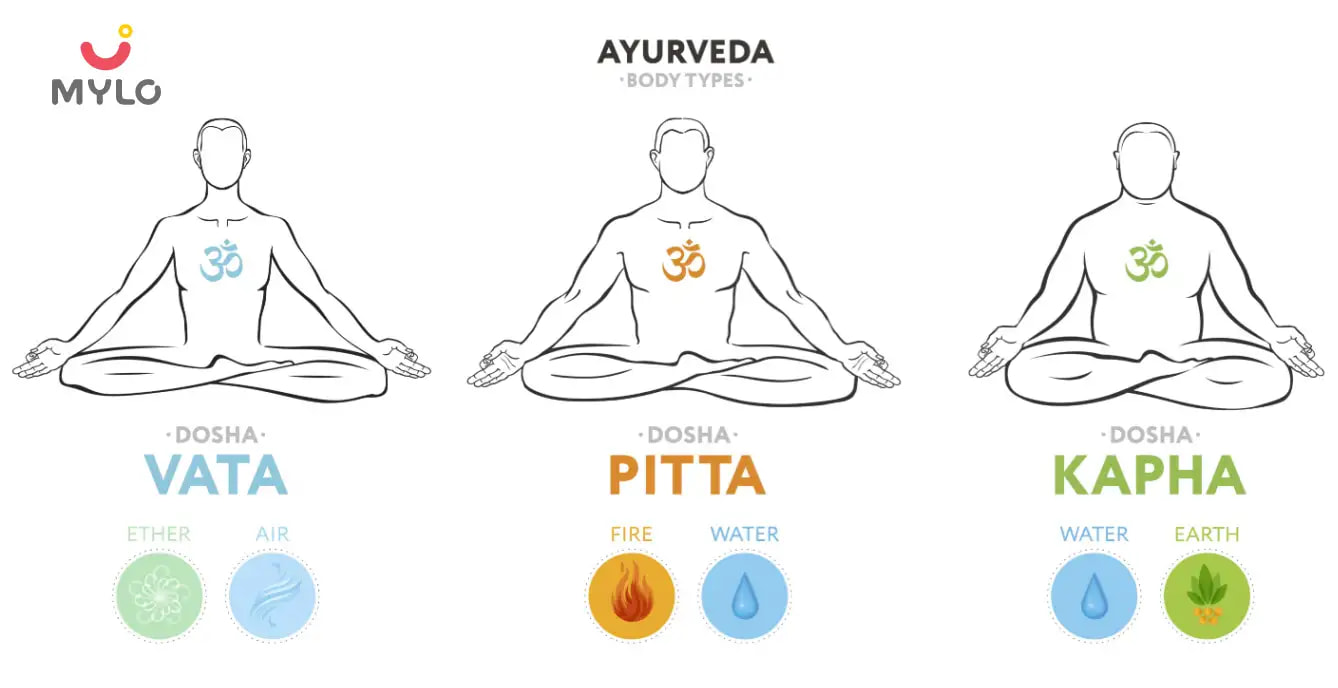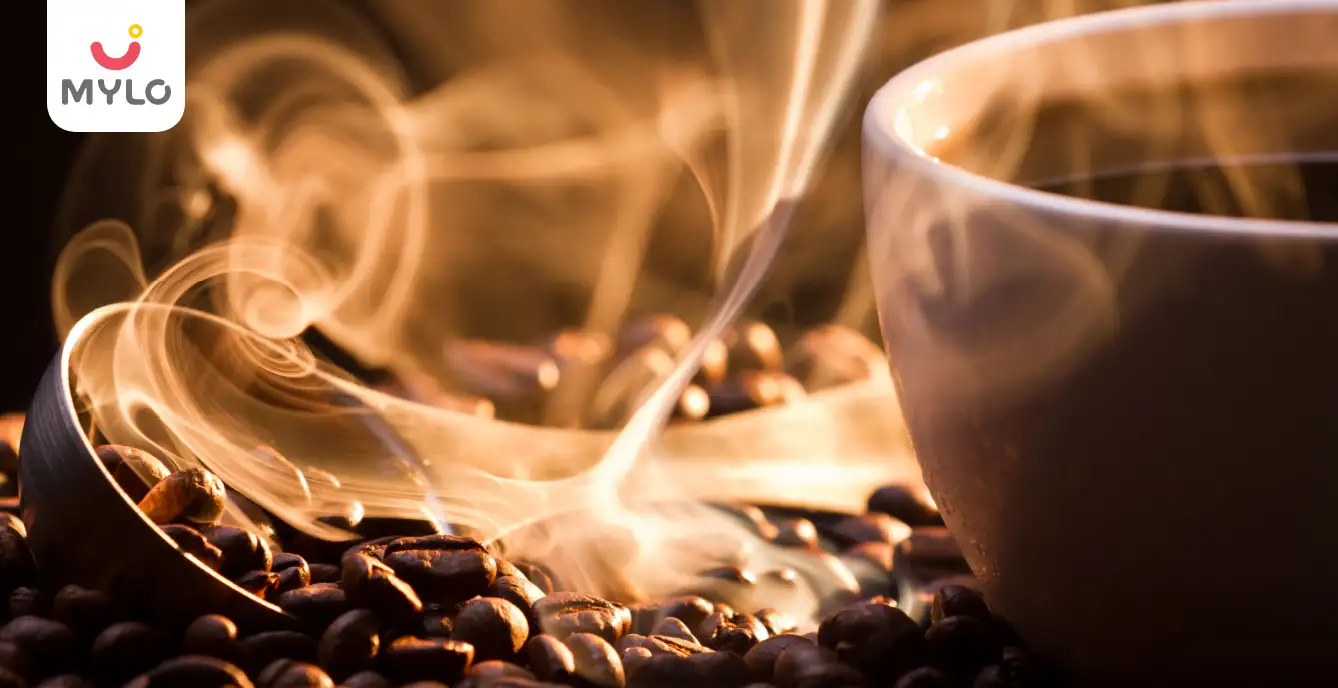Home

Ayurveda & Homepathy

Vata Pitta Kapha: The Ultimate Guide to Discovering Your Ayurvedic Constitution
In this Article

Ayurveda & Homepathy
Vata Pitta Kapha: The Ultimate Guide to Discovering Your Ayurvedic Constitution
Updated on 20 October 2023
Ayurveda- the way of life emphasizes that there are three elemental energies or doshas- Vata, Pitta, and Kapha in the body that identifies peculiar combinations of physical, physiological, and psychological characteristics of a person. Aligning our conscience with these three elemental energies can enlighten us to customize our diet, lifestyle, and wellness to help us lead healthier and more vibrant lives.
Aren’t you curious to know more about them? Well, if yes read the article till the end and empower yourself with valuable insights about vata pitta kapha diet chart and more. Find out which one is yours and how to balance vata pitta kapha.
Vata Pitta Kapha Meaning
Vata Pitta Kapha are the basic elemental energies in the human body. When these vital forces or energies maintain harmony, it denotes a state of overall health and well-being. On the flip side, any disruption or imbalance in these elemental energies is responsible for the onset of diseases.
Vata Pitta Kapha Characteristics & Body Types
Let us understand Vata Pitta Kapha body types and characteristics in detail:
Vata Characteristics & Body Types
Vata is one of the elemental energies and is associated with two elements air and space. The characteristics of Vata are mobility, lightness, cold, dryness, irregularity, creativity and agility.
Every individual has different proportions of each dosha, and the body type is largely influenced by the dominant dosha. Here we will discuss the physical and mental characteristics of vata-dominant personality.
1. Lean Build
The individuals who have Vata dosha as their dominant personality trait have a slim, and wiry physique with less muscle mass and body fat.
2. Prominent Joints
Vata-dominant people have more prominent joints and have long limbs and fingers.
3. Thin, Dry Skin
These people have thin, delicate, and dry skin and are more likely to have issues such as dryness and wrinkles.
4. Prominent veins
Veins are more pronounced as the body structure is lean with less fat tissue.
5. Quick Movements
These individuals make quick movements, and a general restlessness can be observed in their overall demeanor.
6. Sensitive digestive system
Vata-dominant types usually have sensitive stomachs and often experience digestive problems.
7. Creative
Vata-types are creative and have good imagination. They have a quick and agile mind that allows them to think out of the box and bring new innovations.
8. Changeability
These individuals can accept change easily and are open to new environments and conditions. In fact, they want to break the monotony and explore outside the boundaries.
10. Anxiety
Vata-dominant personalities have a mental restlessness which makes them easily change their focus or attention. These individuals are also anxious and worrisome by nature and due to an overactive mind, they tend to overthink.
If you have many or all these traits, then you might have Vata as your dominant dosha.
You may also like: Arogyavardhini Vati: How This Herbal Blend Can Help You Balance Your Three Doshas
Pitta Characteristics and Body Type
Pitta is one of the elemental energies and is linked with elements of fire and water. The characteristics of pitta are strong digestive powers, sharp intellect, intense and focused, ambitious, courageous, leadership, competitive, and passionate. Pitta body type has the following features:
1. Medium Build
These individuals have medium, well-proportioned bodies and have a defined musculature.
2. Warm skin
Pitta-dominant types are warm to touch and have oily and sensitive skin. These people are more likely to have skin conditions that involve inflammation.
3. Sharp facial features
The people have sharp features like well-defined nose and eyebrows.
4. Medium hair
Pitta-dominant individuals have medium hair thickness and can have early graying of hair due to increased heat associated with pitta dosha.
5. Strong appetite
These individuals have a strong and consistent appetite and get cranky if they are hungry.
6. Strong body odor
Pitta people have a strong body odor which is even more evident when they are under stress or overheated.
7. Goal-oriented and intellectual
These individuals are ambitious and have high intellect and analytical skills. They are good at problem-solving.
8. Leadership qualities
Pitta-dominant individuals often showcase strong leadership and are born leaders who take charge of situations and lead from the front.
9. Short temper
Due to excess of fire element, these individuals are short tempered and when pitta dosha is aggravated or vitiated, it can lead to irritability, impatience, and triggers emotional outbursts.
If you can tick most of the characteristics, then you are a pitta-dominant type.
You may also like : Chandraprabha Vati: How This Potent Ayurvedic Formulation Can Boost Your Health
Kapha Dosha Characteristics and Body type
Kapha dosha is one of the elemental energies and is made of elements water and earth. The characteristics of Kapha dosha are it is responsible for lubricating the joints, storing energy, and giving bulk to the tissues. These people are steady and stable, usually have a slower pace and a good memory.
Here is a list of characteristics of Kapha-dominant personality:
1. Well-developed body
Kapha-types have a sturdy and well-developed body and have an increased likelihood to gain weight.
2. Smooth skin
These individuals have soft and moist skin which makes them look younger.
3. Thick hair, oily, and cool skin
Kapha-dominant individuals have thick, lustrous hair and their skin is cool to touch and can also be greasy.
4. Steady appetite
This group have a steady and moderate appetite and have a preference for hearty and comforting foods. These individuals have a sound sleep but if the dosha is imbalanced then it can lead to excessive sleepiness and laziness.
5. Sensitivity and empathy
Kapha-dominant individuals are sensitive and empathetic and henceforth are good listeners and supportive friends.
6. Steady emotions
These individuals can keep their emotions under check and remain unperturbed by external circumstances.
7. Consistent
These individuals often showcase remarkable consistency in their daily routine and habits and have a stable lifestyle.
If you find yourself thinking whether you are a unique blend of doshas, then take solace in learning that you are not alone. Many people are a combination of two or even three doshas, with one being the dominant one. As a result, your body type can be categorized as Vata-Pittaja or Pitta-Kaphaja depending upon an array of factors.
How to Determine your Ayurvedic Constitution- Vata Pitta Kapha?
Identifying your unique constitution or Prakriti involves understanding the balance of doshas. Take a moment and answer this simple quiz to get enlightened about your inner self and dominant dosha. Keep a note of your answers for better understanding.
Body-frame, build and body weight
-
Lean, with difficulty to put on weight
-
Moderate build, and balanced body weight
-
Heavy frame and an inclination to put on weight easily
Texture of the skin
-
Dry, rough, and cracked
-
Sensitive, highly prone to skin conditions with inflammation
-
Well-hydrated, soft, and smooth
Digestive powers
-
Irregular digestive system with frequent constipation
-
Good digestive strength but more prone to acidity and heartburn
-
Slow digestive strength and feels heavy after having food.
Sleep routine
-
Light, faces issues in falling asleep
-
Medium, may get up during the night
-
Heavy, loves to sleep and is a bit lazy
Temperature Tolerance
-
Intolerant to cold especially during winters
-
Intolerant to heat especially during summers
-
Tolerates both cold and heat uniformly
Activity Levels
-
Super active, restless and quick to take up new projects and quick to quit.
-
Moderately active, have burst of energy, moderate to take up new projects and quit only during later stages
-
Less active, works at a calm and consistent pace, consistent with projects and complete them.
Mood and emotions
-
Anxiety, nervousness, and worry a lot
-
Ambitious, competitive, but are short-tempered
-
Calm, satisfied, and tendency to form attachments.
Appetite
-
Keeps fluctuating, have sudden cravings
-
Strong, have a preference to salty and spicy food items
-
Slow and love to have sweet, oily, and heavy food items.
Results
You can easily interpret your dominant dosha by following the key given below:
-
If most of your answers are A’s, then your dominant dosha is Vata.
-
If most of your answers are B’s, then your dominant dosha is Pitta.
-
If most of your answers are C’s, then your dominant dosha is Kapha.
It is important to understand that your dominant dosha or unique constitution in the balanced state while the current doshas balance or VIkriti is influenced by external factors like lifestyle or environment. Consult with an Ayurvedic Physician for a more detailed assessment of your body constitution.
Vata Pitta Kapha Diet Chart
According to Ayurveda, our diet and lifestyle should be in harmony with our unique body constitution (Vata, Pitta, or Kapha) to have a balanced state and to promote health and wellness.
Vata Diet Chart
Early Morning
-
Lukewarm water with honey and lemon.
Breakfast
-
Oatmeal infused with apples and a little bit of cinnamon.
Snack
-
A small handful of soaked almonds.
Lunch
-
A bowl of steamed or cooked veggies like carrots, peas, and spinach.
-
Basmati rice
-
Moong dal (Yellow lentil) Soup and add a small amount of ghee
Afternoon Snack
-
A warm herbal tea with ginger or chamomile
-
Fresh seasonal fruits like bananas or papaya
Dinner
-
Steamed sweet potatoes or Shakarkandi chaat
-
Vegetable salad
-
Lentil soup along with flat wheat bread or chappatis
Bedtime
-
Warm milk with a pinch of nutmeg powder
Pitta Diet Chart
Early Morning
-
A cool refreshing coconut water
Breakfast
-
Cucumber, tomato sandwich
-
Cold milk
Lunch
-
Stir fried or steamed veggies like broccoli, carrots, peas, and others
-
Add ghee to all the dishes as it helps to balance digestive fire.
-
Bitter gourd curry with chappatis
Afternoon Snack
-
Buttermilk or chachch and add roasted jeera powder, dried mint leaves, and rock salt.
-
Refreshing peppermint tea
Dinner
-
Salad
-
Rice/chappati and lentil soup (less spices) or vegetable khichdi
Bedtime
-
Aloe vera juice or rose tea
Kapha Diet Chart
Early Morning
-
Lukewarm water with honey and lemon juice
Breakfast
-
Idli sambhar or Vegetable Upma
Snack
-
Fresh fruits like pomegranate seeds, or berries
Lunch
-
Lentil soup with plenty of spices
-
Brown rice
-
Steamed veggies like carrots, peas, and others.
Afternoon snack
-
Green tea or ginger tea and add a little bit of honey
Dinner
-
Vegetable soup
Bedtime time
-
Golden Milk (turmeric milk added with a pinch of black pepper)
These generalized diet charts would have given you an idea about how the meals should be planned for each dosha type. It is important to consider that Ayurvedic diet charts are highly personalized as everybody is a unique combination of doshas balance, therefore, it is best recommended to consult with an Ayurvedic Practitioner for a more customized diet plan.
How to Balance Vata Pitta Kapha?
If you are experiencing symptoms of Vata imbalance, then try to include food items that have sweet, sour, or salty taste to maintain the balance. Avoid food items that are cold, frozen, or dried. Moreover, try to move to a warm and cozy place as it will pacify your increased Vata dosha.
You can also treat yourself to massages with warm oils and be surrounded by warm colors. Indulge in yoga and meditation as it will calm the brain and prevent restlessness and anxiety associated with vitiated Vata.
If you are experiencing symptoms of imbalances of Pitta dosha then incorporate cooling foods and herbs such as ghee, coconut water, lime, cucumber, coriander, fennel, and cardamon. Stay away from hot, spicy, sour, fried, and fermented food items.
Include moderate physical activity in the form of walking or Yoga but avoid strenuous exercises as increased body heat can further aggravate Pitta dosha. Always relax in a cool place and self-massage with cooling oils like coconut oil and be surrounded with calming music and soothing colors and fragrances.
Kapha dosha imbalance can be mitigated by including flavors like pungent, bitter, and astringent. You can include food items such as bitter melon, gourd, turmeric, fenugreek, apples, pomegranate, beans, and lentils. Avoid cold, frozen and moist food items.
Ensure to relax in a warm and dry place and remaining active can help to balance kapha dosha. Indulging in massages with warm oils and engaging in vigorous exercises that stimulate the energy flow is important for kapha types.
The Bottomline
Harmony in Vata, Pitta Kapha is a prerequisite to enjoy a state of health and wellness. By following some diet and lifestyle modifications these doshas can be balanced. Knowledge is power, by learning about vata pitta kapha characteristics and vata pitta kapha body types, holistic health is only a step away and that is transforming awareness into meaningful action.
References
1. Jaiswal, Y. S., & Williams, L. L. (2017). A glimpse of Ayurveda – The forgotten history and principles of Indian traditional medicine. Journal of Traditional and Complementary Medicine
2. Sharma, H., & Keith Wallace, R. (2020). Ayurveda and Epigenetics. Medicina



Written by
Madhavi Gupta
Dr. Madhavi Gupta is an accomplished Ayurvedic doctor specializing in Medical content writing with an experience of over 10 years.
Read MoreGet baby's diet chart, and growth tips

Related Articles
Related Questions
Influenza and boostrix injection kisiko laga hai kya 8 month pregnancy me and q lagta hai ye plz reply me

Hai.... My last period was in feb 24. I tested in 40 th day morning 3:30 .. That is faint line .. I conculed mylo thz app also.... And I asked tha dr wait for 3 to 5 days ... Im also waiting ... Then I test today 4:15 test is sooooo faint ... And I feel in ma body no pregnancy symptoms. What can I do .

Baby kicks KB Marta hai Plz tell mi

PCOD kya hota hai

How to detect pcos

Related Topics
RECENTLY PUBLISHED ARTICLES
our most recent articles

TV & OTT
Top 10 Romantic Web Series on Hotstar You Must Watch

Back Pain
Back Pain During Period: Understanding the Causes and Solutions

Sex Life
Pain After Sex: The Ultimate Guide to Understanding Causes and Finding Relief

Periods
Coffee in Periods: Debunking the Myths and Understanding the Facts

Vaginal Bleeding
Postmenopausal Bleeding: Symptoms, Causes & Treatment

Hormones
Hormone Replacement Therapy (HRT) : Type, Side Effects & Treatment
- Dolo 650 During Breastfeeding: Expert Advice and Guidelines for Nursing Mothers
- Arogyavardhini Vati: How This Herbal Blend Can Help You Balance Your Three Doshas
- How to Clean Your Vagina & Vulva Complete Guide
- Blighted Ovum: Causes, Symptoms & Treatment
- The Ultimate Guide to Consuming Iron and Folic Acid Tablets
- White Creamy Discharge: Is It Normal or a Cause for Concern?
- First-Time Sex & Pregnancy Chances: What You Need to Know
- The Ultimate Guide to Twin Pregnancy Symptoms at 4 Weeks
- A Comprehensive Guide to Understanding the Effects of Masturbation
- Placenta Position: How It Affects Your Pregnancy and Delivery
- Clitoral Hood: Benefits, Risks & More
- Pelvic Exam: Details, Outcomes & Dos & Don'ts
- My life mantar is - HARE KRISHNA HARE KRISHNA KRISHNA KRISHNA HARE HARE HARE RANA HARE RAMA RAMA RAMA HARE HARE which means no matter what is going in your lifejust keep this mwntra in your mind every minute every sec everything will be good automatically. U will not need any other mantra
- Early Pregnancy & Egg White Discharge: What You Need to Know


AWARDS AND RECOGNITION

Mylo wins Forbes D2C Disruptor award

Mylo wins The Economic Times Promising Brands 2022
AS SEEN IN
















- Mylo Care: Effective and science-backed personal care and wellness solutions for a joyful you.
- Mylo Baby: Science-backed, gentle and effective personal care & hygiene range for your little one.
- Mylo Community: Trusted and empathetic community of 10mn+ parents and experts.
Product Categories
baby carrier | baby soap | baby wipes | stretch marks cream | baby cream | baby shampoo | baby massage oil | baby hair oil | stretch marks oil | baby body wash | baby powder | baby lotion | diaper rash cream | newborn diapers | teether | baby kajal | baby diapers | cloth diapers |








